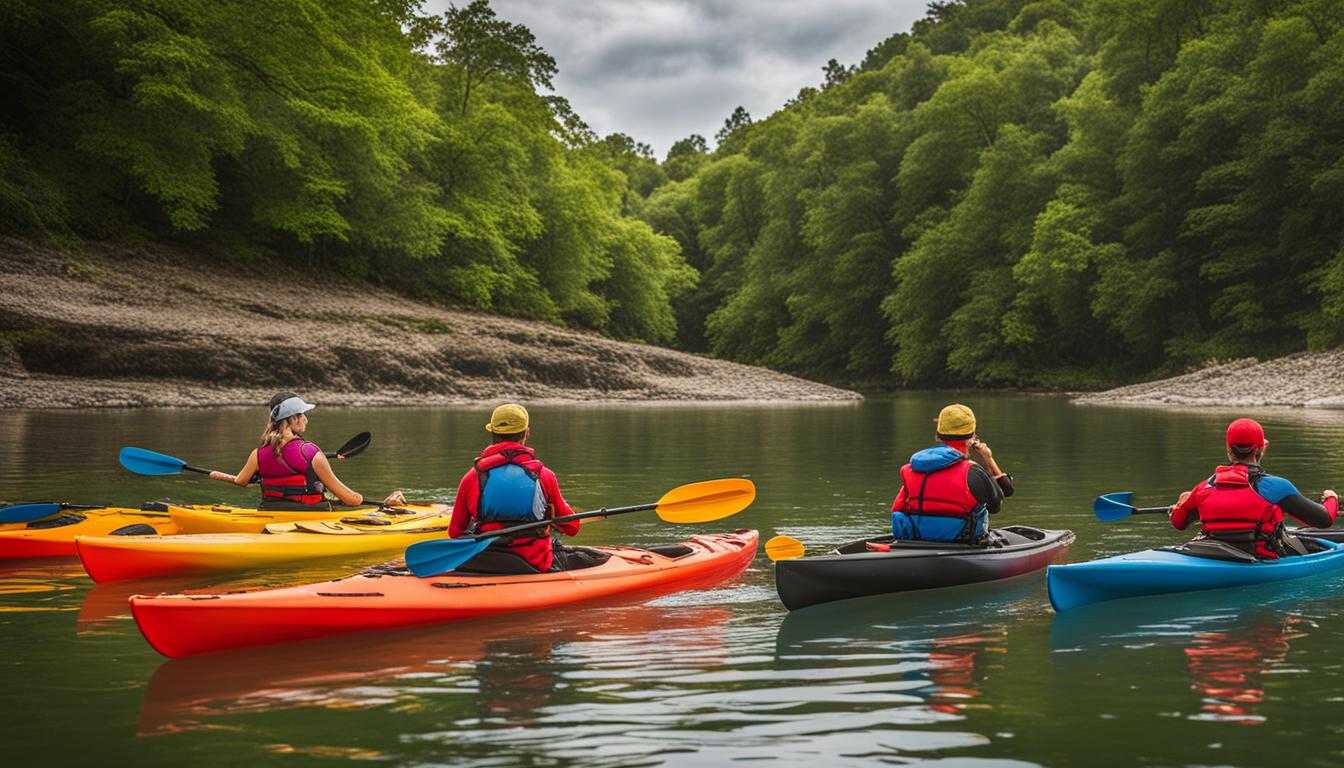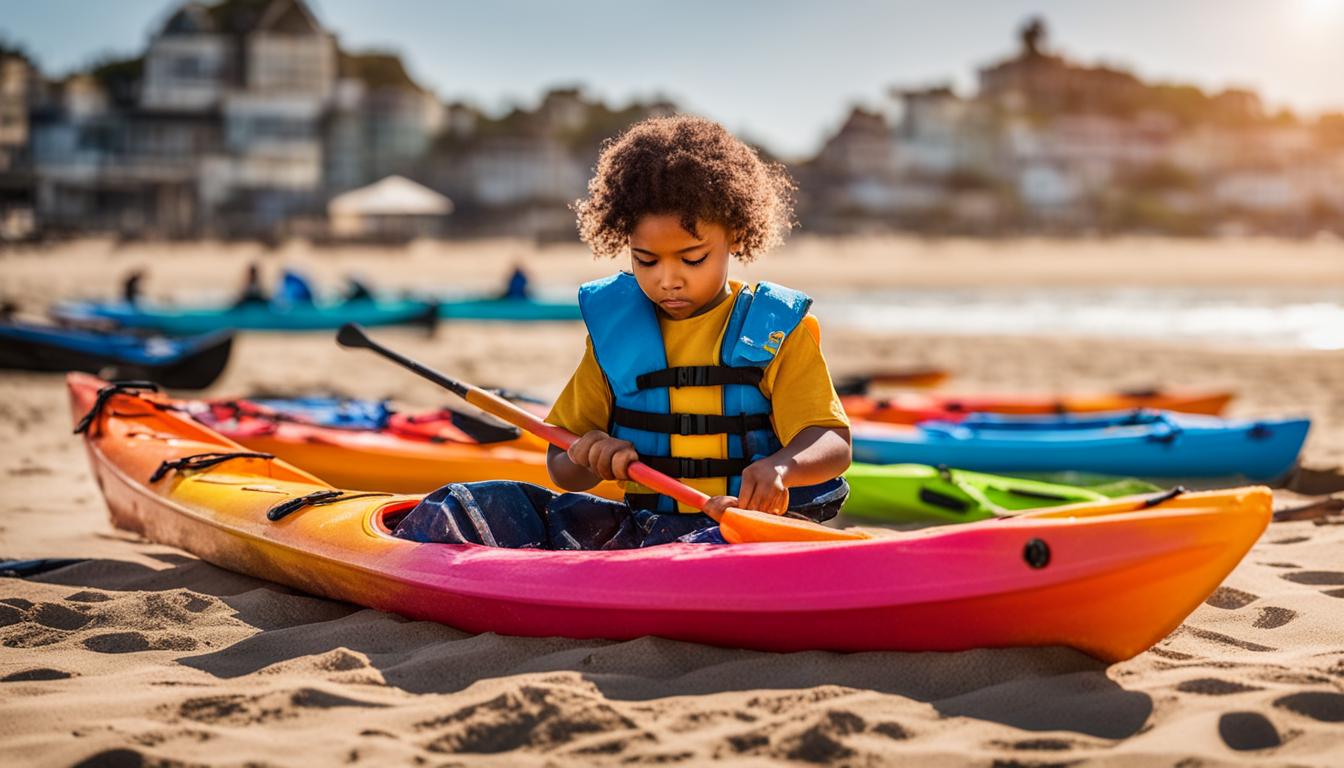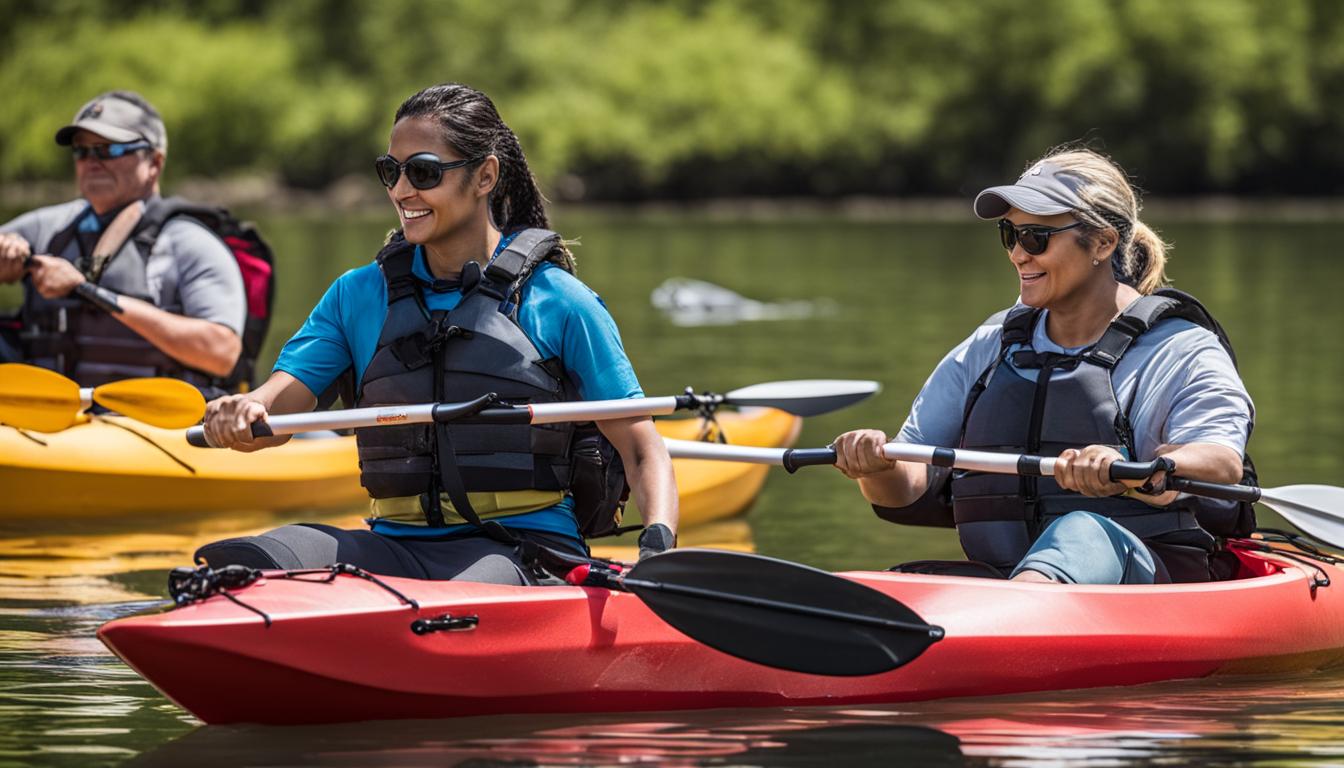When deciding between paddling clubs and kayaking groups, it’s important to understand the differences between paddling and kayaking. Paddling refers to the use of a stand-up paddle board (SUP), where the paddler stands on a board and uses a single-bladed paddle. Kayaking, on the other hand, involves the use of a kayak and a double-bladed paddle while seated. Both activities have their own unique benefits and activities that appeal to different individuals. It’s crucial to consider your preferences and interests before choosing which type of group to join.
Key Takeaways:
- Understanding the differences between paddling and kayaking is essential when deciding which group to join.
- Paddling involves using a stand-up paddle board (SUP) with a single-bladed paddle, while kayaking uses a kayak and a double-bladed paddle.
- Paddling clubs offer specialized activities such as SUP yoga or SUP pilates, while kayaking groups provide various kayaking disciplines and competitive racing opportunities.
- Your personal preferences and interests should guide your choice between paddling clubs and kayaking groups.
- Consider the benefits and activities that align with your interests to fully enjoy and engage in the water sports community.
Is it Easier to Kayak or Paddle Board?
When deciding between kayaking and paddle boarding, it’s natural to wonder which activity is easier. The learning curve and physical demands differ for each, so let’s explore the factors that may influence your decision.
Kayaking requires building upper body stamina and developing proper technique for paddling. The fixed seating position can put strain on certain muscles, leading to potential repetitive strain injuries (RSIs). It’s important to consider your physical capabilities and any pre-existing conditions before delving into kayaking.
Paddle boarding, on the other hand, offers a more intuitive experience. The primary challenge is finding balance on the board while paddling. Although it may take time to master, paddle boarding can be adapted to various skill levels and body types. It also carries a lower risk of RSIs as it involves more freedom of movement. If you prefer activities that prioritize balance and coordination, paddle boarding might be the easier option for you.
Physical Demands of Kayaking
“Kayaking requires practice to build upper body stamina and the risk of repetitive strain injuries (RSIs) due to the fixed seating position.”
Balance and Coordination Required for Paddle Boarding
“The biggest challenge in paddle boarding is finding balance on the board, making it a great option for those who prioritize balance and coordination.”
| Kayaking | Paddle Boarding | |
|---|---|---|
| Physical Demands | Builds upper body stamina | Emphasizes balance and coordination |
| Injury Risk | Potential for RSIs due to fixed seating position | Lower risk of RSIs |
| Learning Curve | Requires practice to develop proper paddling technique | Intuitive, but mastering balance may take time |
Remember, the ease of kayaking or paddle boarding ultimately depends on your individual abilities and preferences. It’s always recommended to take lessons or seek guidance from experienced instructors to ensure a safe and enjoyable experience on the water.

Can a SUP Keep Up with a Kayak?
When comparing the speed of a stand-up paddle board (SUP) and a kayak, it’s important to consider the different designs and purposes of each watercraft. While kayaks are generally faster in straight-line speed, there are specific types of SUPs that can keep up with or even surpass kayak speeds, depending on the conditions and purpose of the activity.
One key advantage of SUPs in terms of speed is their ability to catch waves and ride downwind. Downwind or race SUPs are specifically designed for speed and gliding efficiency, making them faster than recreational or whitewater kayaks. These specialized SUPs have longer and narrower hull shapes, which allow them to glide effortlessly through the water.
Additionally, the convenience of storage and handling is another advantage of SUPs. Inflatable SUPs, in particular, offer easy transportation and storage options. They can be quickly inflated and deflated, allowing for a quicker start in the water compared to traditional kayaks. This can give SUPs a head start in terms of time spent entering and exiting the water, ultimately maximizing the overall speed and efficiency of the activity.
| SUP | Kayak | |
|---|---|---|
| Speed | Depends on SUP type and conditions | Faster in straight-line speed |
| Design | Specialized downwind or race SUPs | Recreational or whitewater kayak |
| Advantages | Ability to catch waves and ride downwind | N/A |
| Inflatable SUPs for easy storage and handling | N/A |
Summary:
While kayaks are generally faster than stand-up paddle boards (SUPs) in terms of straight-line speed, there are specialized SUPs that can keep up with or surpass kayak speeds, depending on the conditions and purpose of the activity. Downwind or race SUPs are designed for speed and gliding efficiency, making them faster than recreational or whitewater kayaks. Additionally, the convenience of storage and handling is an advantage of SUPs, especially inflatable ones, which allow for quick inflation and deflation, providing a head start in the water. When considering the speed capabilities of SUPs and kayaks, it’s important to factor in the specific design and purpose of each watercraft.

Conclusion
When it comes to choosing between paddling clubs and kayaking groups, it’s crucial to consider your personal interests and preferences. Paddling clubs offer a vibrant community atmosphere where you can connect with like-minded individuals and participate in specialized activities such as SUP yoga or SUP pilates. On the other hand, kayaking groups provide an exciting platform for competitive races and a wide range of kayaking disciplines to challenge yourself.
To make the right decision, think about what you value in a water sport activity. If you enjoy the versatility and sense of adventure, stand-up paddle boarding might be the perfect fit for you. With paddle boarding, you can explore serene lakes, ride ocean waves, or even venture into whitewater rapids. It’s a fun and engaging way to stay active on the water.
However, if you’re drawn to the thrill of speed and the technical aspects of kayaking, joining a kayaking group could be your calling. Whether you prefer recreational kayaking, sea kayaking, or even whitewater kayaking, there’s a whole world of possibilities to discover. You can challenge yourself, improve your skills, and experience the joy of conquering different water environments.
FAQ
What is the difference between paddling and kayaking?
Paddling refers to the use of a stand-up paddle board (SUP), while kayaking involves the use of a kayak and a double-bladed paddle while seated.
Which is easier, kayaking or paddle boarding?
The ease of kayaking or paddle boarding depends on your physical abilities and preferences. Paddle boarding is more intuitive and adaptable, while kayaking requires building upper body stamina and may pose a risk of repetitive strain injuries (RSIs).
Are kayaks faster than SUPs?
Typically, kayaks are faster than SUPs in a straight-line speed. However, there are different designs of kayaks and SUPs that serve different purposes, so it may vary.
Should I join a paddling club or a kayaking group?
The choice between paddling clubs and kayaking groups depends on your interests and preferences. Paddling clubs offer a community and specialized activities, while kayaking groups provide competitive races and a wide range of kayaking disciplines. Consider what type of water sport activities appeal to you.





